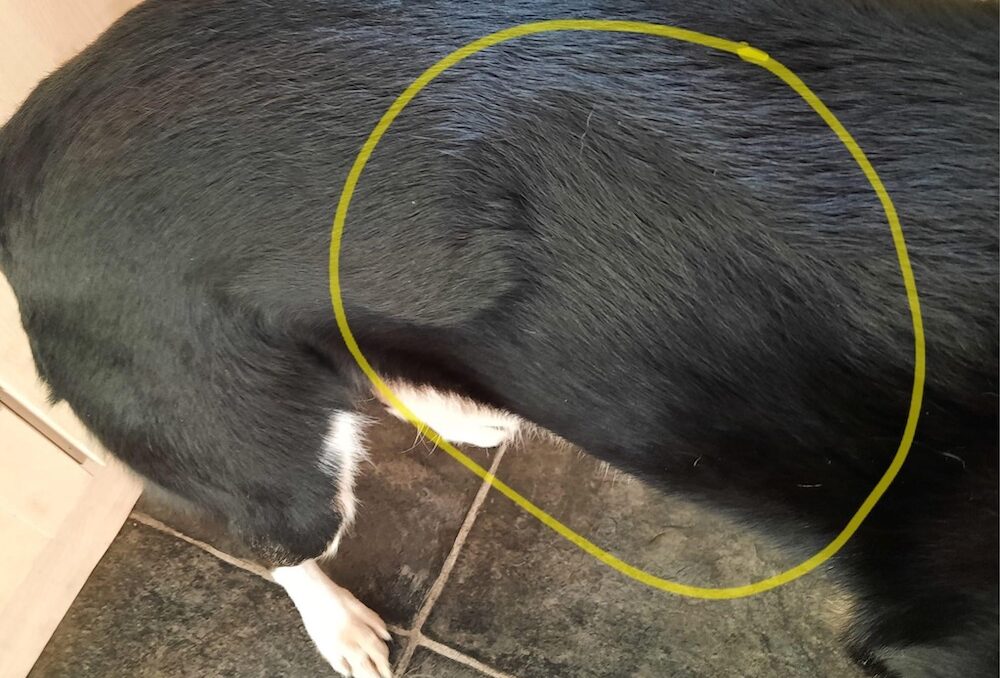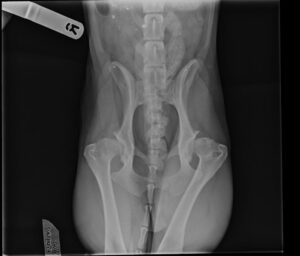As a behaviourist, the possibility of pain is always on my list as a potential cause of, or contributing factor towards, behavioural problems. In the last week alone, I have seen two examples of border collies belonging to friends with severe pain or discomfort, showing hardly any signs that anything was physically wrong. And the final case was my wonderful border collie Blue who passed away age 13 a couple of years ago.
In the first case, Gannon, a working sheepdog, works every day on the farm, and in trials at weekends. A couple of months ago in an injury he almost dislocated his hip. The vet thought that after rest and rehabilitation, the injury was healed . But his owner noticed a shorter stride while working, and coat changes at the location of the injury which made her question his recovery. Upon further veterinary investigation, it was found that Gannon‘s hip was still partially dislocated. But he was still going about his work every day on the farm with no obvious sign of any pain or discomfort. In the photo you can see how Gannon’s coat above his hip injury changed a little which helped to alert his owner that something was wrong.


In the second case an agility handler noticed that her three year old border collie, Zip, tucked his back legs unusually tightly under him while jumping. Less experienced owners may not have realise that this was not a common way of jumping. There were no other signs of pain or discomfort and the dog loved his agility training and competing. Upon further investigation, his owner found that he was suffering from severe hip dysplasia and arthritis, and he was retired from agility. The photo below shows Zip jumping before his condition was diagnosed, and the x-Ray shows Zip’s severe hip dyspla.

Blue was the most wonderful collie I’ve ever owned, and it breaks my heart that I know now what I didn’t know then. Blue did show signs that he was in pain, but at the time, I didn’t recognise them. He was ocasionally lame, but by the time we’d taken him to be checked out at the vet, it had always improved. But the more telling signs were that he would repetitively run up and down in the garden when there was nothing else to do, and he would also sometimes scratch the floor when left. I had no idea back then that repetitive behaviours like these can be a sign that a collie is in pain. If only I’d started my training 15 years sooner.

These cases highlight the fact that it’s quite possible that border collies (and most other breeds) will show no signs that they are in any pain at all, even when the underlying condition is extremely painful. Collies are particularly likely to hide any discomfort because of their joy of life and anything that involves moving or running! This is why, as behaviourists, we often insist that dogs get checked over thoroughly by a vet if we are suspicious that pain may be causing or exacerbating problem behaviours.
